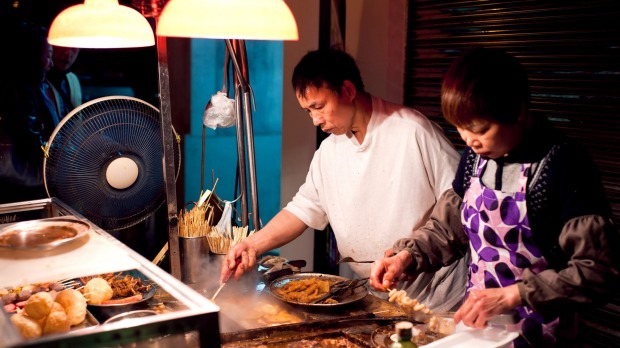
Food worms its way into the mind shortly after the Cathay Pacific flight lifts off from Sydney en route to Hong Kong. This could be because the bloggers on the trip whip out cameras at the drop of a caramel-coated peanut and breakfast has just been served, but in truth it's because of the bloke just behind in business class row 20.
He's sucking down a bowl of congee with the sort of noise you'd imagine a baleen whale makes sieving krill in the deep. It is, depending on your sensibilities, either intensely irritating or a glorious example of someone really enjoying their food.
I'm in the latter camp – though it must also be said I'm so inculcated in the Western diet that I'm unable to see congee as a breakfast food and have chosen a chorizo and pepper frittata with grilled asparagus from the in-flight menu. It tastes wonderful but cannot compete with the congee for sheer decibels.
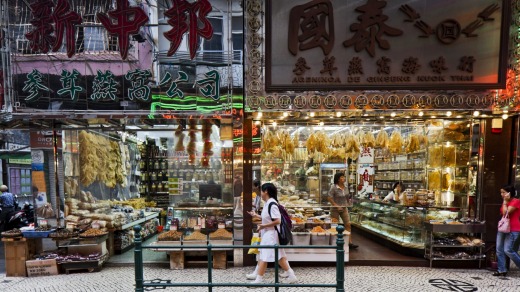
Nine hours and one Turbojet ride across the water from Hong Kong International Airport later we enter Macau through the low-key ferry terminal.
It is here in what has been dubbed the Las Vegas of the East that, from my room high up in the swish Sheraton Macao Hotel (the largest in the world with 3896 rooms and suites), I can see the partly finished frame of the Eiffel Tower. Well, an Eiffel Tower; like the Venetian hotel and casino just around the corner this building site will eventually become a replica of the original Paris Las Vegas in Nevada.
This is because on this land, reclaimed from the surrounding seas, "Mega Projects" mean casinos, and lots of them. This is, after all, the only place in China where gambling is legal, and yet, if you can drag yourself away from the baccarat tables, there are nearby seaside oases that could easily pass for Mediterranean villages. A 10-minute drive from the Sheraton through leafy suburbs, for instance, brings us to Miramar, a bustling Portuguese restaurant perched on the edge of a beach in Coloane.
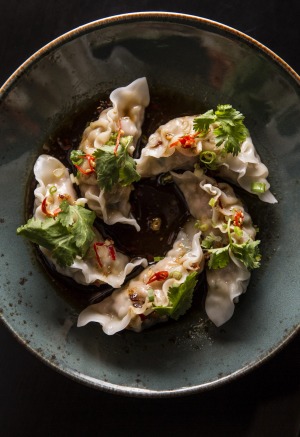
Inside, Caucasian and Asian families tuck into vinho verde and the sort of homely food – cod fish (bacalhau), sausages, sapateira recheada (stuffed crab) – that the Portuguese brought with them when they made landfall on this peninsula in the 1550s and stayed for 450 years.
Today, typical Portuguese food can be found in restaurants such as Miramar and the much-awarded Antonio's in Taipa village where eponymous owner Antonio Coelho holds voluble and charismatic sway over dishes such as goats' cheese with honey on rye bread, a salty, smoky pork sausage flamed in brandy, seafood rice, morsels of suckling pig and delightful clams in a white wine sauce.
Street food in the historic centre of Macau is a mix of Portuguese and Chinese, with every other shop stocking Portuguese egg tarts and the locals either tucking in to the simple but incredibly popular pork chop buns (essentially a pork chop in, er, a bun) or picking out multi-coloured "kebabs" of fish balls and the like to pop into their take-away hotpots. The more adventurous might also find themselves chewing on eye-wincingly sour pigs' ear skewers.
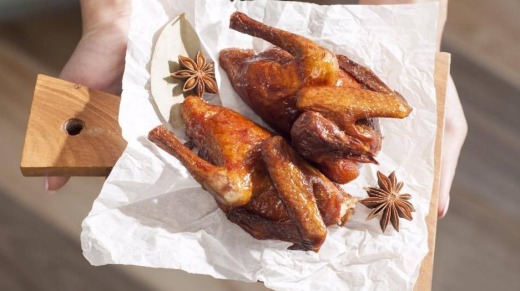
Whatever else you do, don't try the iconic Portuguese tarts at Lord Stow's original bakery at 1 Rua da Tassara, Coloane. These warm, eggy delights (less sugary than the European originals), with their beautifully flaky pastry will just ruin you for any future tarts.
Macanese cuisine today, celebrated in popular restaurants such as Litoral on Rua do Almirante Sergio, is a result of hundreds of years of cohabitation and not a little slavery. An eclectic fusion of southern Chinese and Portuguese food, it is also influenced by south-east Asia and Africa.
Snare a table at Litoral and you'll find yourself tucking in to prawn cakes, samosas, African chicken (spicy barbecued chook), chili shrimps, langoustine-like "devil" prawns stuffed with garlic, and stir-fried curry crab followed by serradura (aka Macau sawdust pudding), which is essentially a biscuit-layered flavoured mousse.
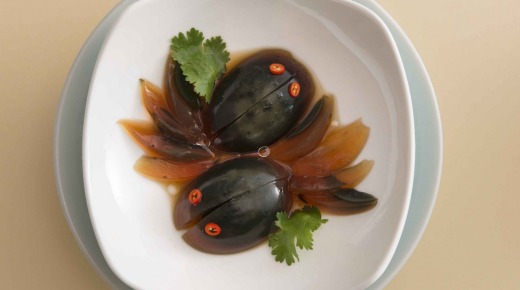
Hong Kong, on the other hand, is another kettle of congee. Just an hour away on the Turbojet, the food here is strongly southern Chinese, whether it be street food in the old working class district of Sham Shui Po or a more modern take on classics in trendy restaurants such as Social Place in Central or Hutong on the 28th floor of Kowloon's One Peking building with its magnificent views across the harbour to Hong Kong island.
In a few hectic food-focused days we encounter warm pineapple buns that have never been near a pineapple, Yakult gin fizz cocktails and the silkiest, freshest tofu you're ever likely to eat from a shop that's been serving that and only that for 60 years.
A cafe just around the corner from the Sham Shui Po MTR station is the first stop on a Hong Kong Foodie Tasting Tour (hongkongfoodietours.com) which delves under the skin of Sham Shui Po and finds us in a breakfast hole-in-the-wall filled with locals who eye us suspiciously until we start sucking down deliciously slippery rice rolls and spraying the table with a hoisin and soy sauce. OK, that was just me but, really, they make you eat with oversized toothpicks.
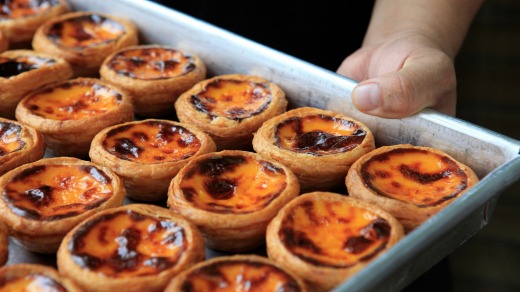
After that it's the bean curd shop where we sigh over a warm tofu dessert with ginger and sugar syrup, then mmmm over braised goose and pig knuckle in a roast meat restaurant before swinging by a bakery for walnut and almond cookies and finishing up at a popular noodle shop where queues of locals snake out of the shop as they wait to get stuck in to moreish egg noodles topped with delicate but pungent shrimp roe (ha zi lo meen).
In contrast, Hong Kong is also home to cutting-edge cuisine in places such as Ho Lee Fook ("good fortune for your mouth" in Cantonese), a funky subterranean restaurant in the trendy SoHo area.
Nothing much to look at from outside – the entrance is basically the kitchen – a set of narrow stairs bordered by an entire wall of gold money cats leads down to a hip basement where colourful, backlit paintings of the area by in-demand artist Jonathan Jay Lee pepper the dark walls.
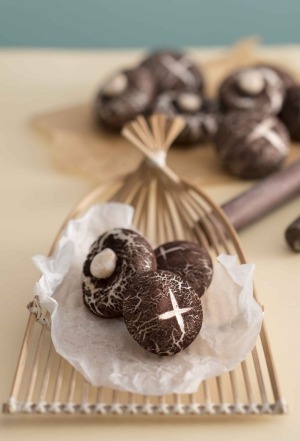
Taiwanese-born chef Jowett Yu, who worked in Sydney for 10 years at places such as Ms Gs and Mr Wong as well as Tetsuya's, says he wants to showcase the best of Chinese food as well as fusing other flavour profiles when he can.
And he's true to his word. Our dinner tasting menu features a Hong Kong-style French toast made of peanut butter, condensed milk and/or maple syrup. We also tuck in to crispy chicken wings with a shrimp sambal, something called "Slightly Fires the Emperor" (a mix of garlic chive flower, chorizo, cashews and shiitake mushroom), the affectionately named Mom's Mostly Cabbage (pork dumplings), and wagyu short ribs with roast jalapeno puree and green shallot kimchi which alone is worth the price of the air fare.
The only bad experience in three days of dining came up on The Peak at I See I See, a brightly coloured shop selling, among other things, durian flavoured ice-lollies.
In Macau our guide had described durian as smelling like hell but tasting like heaven. How wrong can you be? And turning them into ice-cream seems a peculiarly egregious sin if you ask either myself or my taste buds, which still cringe at the memory.
This swanky, convivial diner attached to the uber-trendy Police Married Quarters (PMQ) art and design centre is the latest offering from Michelin-starred British chef Jason Atherton. Housed in what used to be the Junior Police Clubhouse, the two-storey building now incorporates an intimate dining room upstairs featuring a modern British menu (snare a table on the balcony if you can) and a more casual all-day cocktail bar and café downstairs as well as an outdoor patio. Try the flatbread pizzas (Iberico ham, goats' cheese) downstairs and whatever you do don't go past the truffled popcorn bar snack. Their most popular dish is, believe it or not, two poached eggs and avocado on toast. Go figure.
PMQ, 35 Aberdeen Street, Central, Hong Kong. See www.aberdeenstreetsocial.hk
In contrast to Hutong, which is dimly lit to take advantage of the harbour views, The Social Place is light and bright and cheery – think lightly industrial Martha Stewart – and hugely popular if the young crowd queuing to get in is anything to go by. The food is contemporary Chinese with plenty of small, dim sim-style dishes. Drunken chicken, spicy 10,000-year-old duck eggs, roasted white king pigeon (eaten with plastic gloves) and the signature chicken soup in young coconut are the standouts in an excellent and beautifully presented menu.
Social Place, The L. Place, 137-141 Queen's Road Central, Hong Kong. See www.socialplace.hk
Tucked away in a shopping centre in Kowloon's Tsim Sha Tsui district is the latest venture from the Maxim's food company. No reservations, eat all day, lots of, you guessed it, duck. The vibe they're going for, we're told, is more 'bistronomique' than gastronomique and you'd have to say they've nailed it. It's chic without being off-puttingly so. But it's not all duck, duck and more duck. We might start with sliced duck with osmanthus pudding (oddly moreish) but we move on to sliced pork in garlic and chilli sauce and sautéed prawns with pepper and soya sauce, among others. There's BBQ Peking duck, of course. And all very artfully presented on duck motif china.
Shop 3319, Level 3, Gateway Arcade, Harbour City, Tsim Sha Tsui, Kowloon.
Take breadcrumbs with you; not to supplement the food but to scatter along the way because finding your way back to your room in the cavernous Sheraton Macau hotel complex might be a problem – especially as you are guaranteed to be in a food coma from the astonishing hot pot buffet in Xin restaurant. Choose from a base 'soup' - laksa, Sichuan spicy chilli oil broth, Chinese herbal, traditional – and then help yourself to the cornucopia of fresh ingredients (meat, fish, veggies, you name it) on display. The broth boils away on a gas heater on the table and you chuck your choices in. Try the sour plum mojito mocktail while you're there – delicious.
Xin restaurant, Sheraton Macao Hotel, Estrada do Istmo, Cotai Central, Macau. See www.xinmacau.com
You might want to starve yourself for a day or two before getting stuck into this stunning buffet at the JW Café in the bowels of the JW Marriott but by gum it will be worth it. Lobster, crayfish, shrimp, pipis, abalone, sushi … and that's just the seafood section. Too much choice? Then head off to the more traditional fare of Flint Grill & Bar where excellent house-cured salmon sits alongside organic sirloin steaks, squid ink tagliolini and milk-fed organic black chicken. And in the spirit of adventure, do check out the bar afterwards to try the hotel's signature Holy Smoke cocktail, which is part drink (gin, orange, lemon juice, vinegar, among others) and part theatre as it comes with an Aladdin's lamp of dry ice and rosewater.
JW Marriott Hotel, Pacific Place, 88 Queensway, Hong Kong. See www.marriott.com
discoverhongkong.com/au
macautourism.gov.mo
Cathay Pacific flies four times daily to Hong Kong from Sydney and three times daily from Melbourne. There are 11 flights a week from Brisbane. Prices start from $882 return in economy; $1937 in premium economy and $6174 in business; phone 13 17 47, see cathaypacific.com.au.
The Sheraton Macao Hotel is in Cotai Central, in the "Mega Projects" casino area, and has rooms from $220; see sheratonmacao.com. In Hong Kong, JW Marriott, at Pacific Place, has rooms from $755; see jwmarriotthongkong.com.
For a crash course in all that's foodie in Hong Kong get along to the Hong Kong Wine and Dine Festival on the waterfront in downtown Central at the end of this month. The four-day festival features 300 stalls and runs from October 22-25. It also kicks off the Hong Kong Wine and Dine Month (October 22-November 30) which features food and wine-themed tours and classes.